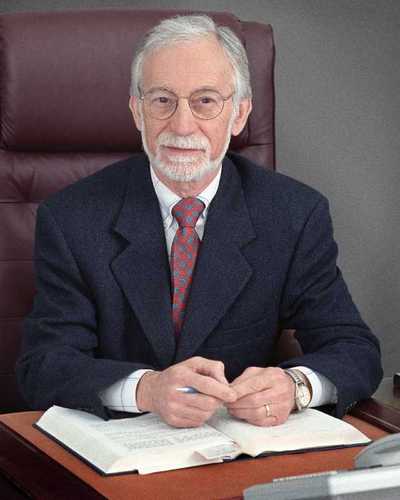The Book of Ruth, which appears in the third section of the Hebrew Bible, K'tuvim, Writings, is a beautiful folktale written in four short chapters. It celebrates the loyalty and reward of a young Moabite widow (Ruth) who chooses to follow her Israelite mother-in-law (Naomi) back to Bethlehem after Naomi was bereaved of her own husband and two sons. Ruth's sister-in-law, Orpah, who was married to one of the two deceased brothers, returns to her community, but Ruth decides to "cleave" to Naomi and share her fate in Judah. Ruth's social status rises rather quickly: Starting as a nochriyah, foreigner (Ruth 2:10), she next describes herself as a shif'chah, maidservant (Ruth 2:13), and then as an amah, handmaid (Ruth 3:9). By the end of the story, Boaz, her future husband, refers to her as an ishah, wife (Ruth 4:10), and the text hails her as an ancestress of King David (Ruth 4:17).
Jewish law assigns this book to the festival of Shavuot for various reasons: The events take place during the summer harvest when "Weeks" is celebrated; Ruth was the ancestress of David who, according to tradition, died on Shavuot; Ruth's acceptance of Judaism corresponds nicely with the Giving of the Torah in the desert to all of humanity; and Ruth's loyalty symbolizes the fidelity to the Torah that is expected of all Jews.
Although the story is set in the period of the Judges (1200-1000 B.C.E.), it is unlikely that it was written at that time. According to the Talmud, "Samuel the prophet wrote his own books, Judges and Ruth." (Baba Batra 14b) Most biblical scholars, however, argue for a postexilic date (i.e., after 70 C.E.). Furthermore, as Rowley noted long ago: "The simple story of the Book of Ruth abounds in problems for which no final solution can ever be found, since the materials for their solution are denied us."
Why was this book written? The purpose is not apparent. Some say that it is simply "an interesting tale of long ago" (Pfeiffer). Others suggest that the author's goal was to promote the inclusion of outsiders, such as Ruth, in the Assembly of Israel (Smith), especially during the days of Ezra and Nehemiah, who pursued an antiforeigner policy. Driver claims that the goal was to establish David's genealogy. For Vellas, family unity is at the center of the story. Recently, Adele Berlin maintained that the book is about "exile and return, land and people." I agree with J. Sasson that the most reasonable rationale is this: The author wished to stress that common people can do the right thing when they act unselfishly toward one another, as witnessed by the main characters in the book. This echoes the ancient rabbis who said that the Book of Ruth was written to teach us a lesson in gemilut chasadim, acts of loving-kindness. (see Ruth Rabbah 2:15) It is this universal message that makes the idyllic Book of Ruth extremely appealing to everyone.
For Further Reading
Adele Berlin, Ruth: Big Theme, Little Book, Biblical Review, August 1996.
J. M. Sasson, "Ruth" in The Literary Guide to the Bible, edited by R. Alter and F. Kermode, Cambridge: Harvard, 1987, pp. 320-328.
Rifat Sonsino is the rabbi at Temple Beth Shalom in Needham, MA.
As a liberal Jewish community, we encourage our young adults to affirm their commitment to the Jewish community on Shavuot. We also read the Book of Ruth because Ruth's fidelity is symbolic of the loyalty expected of the entire Jewish community to Torah and to the people of Israel.
Orpah and Ruth accompany their widowed mother-in-law, Naomi, into the desert on the way back to Bethlehem. Naomi felt that the only place she would be able to leave her daughters-in-law was on the open road, since it was a custom to accompany the departing relative or guest for a distance prior to parting. Naomi says to Orpah and Ruth: "Turn back each of you to her mother's house. May God deal kindly with you, as you have dealt with the dead and with me." (Ruth 1:8)
Orpah reluctantly agrees to remain in her homeland, but Ruth refuses to leave Naomi: "Wherever you go, I will go; wherever you lodge, I will lodge; your people shall be my people, and your God my God. Where you die, I will die, and there I will be buried. Thus and more may the Eternal do to me if anything but death parts me from you." (Ruth 1:16-17)
Why is Ruth's statement so significant? The Hebrew text uses yud hei vav hei (Adonai) for the name of God in Ruth's statement to Naomi rather than the more commonly quoted Elohim. Biblical scholars point out that this is the only time Ruth evokes the name Adonai for God, whereas Naomi and Boaz use it quite frequently in a variety of blessings. This dramatic commitment by Ruth to her mother-in-law is extremely important because with no fanfare or knowledge about her future fate, she allies herself with Naomi and her people. By calling God Adonai, Ruth was probably connecting with Naomi by evoking the theological concept of Midat Harachamim, "God of Compassion." That is, she was seeking to continue her compassionate relationship with Naomi, God, and the Jewish people.
As an adult community, we can learn much from the commitments that our young adults make. The Torah suggests that we as a community accept God and our future without always knowing what either will bring. In Parashat Lech L'cha, Avram left his father's home and his birthplace to go to a land that God says, "I will show you." (Genesis 12:1) In taking this chance, Avram exhibited both faith in God and the hope for establishing a future community. So, too, Ruth has faith that Naomi will lead her to a life of commitment not only to God but to the people with whom Naomi will bring her into contact.
We, too, must take risks and allow ourselves to venture into uncharted territory. By summoning the courage of Ruth and the determination of Avram, we can join together on the holiday of Shavuot to affirm Na-aseh v'nishma, "We will do and we will understand." It is Ruth's willingness to do followed by her involvement in the life she has chosen that ultimately brought her family and friends. What we need to do is take time to look at our own lives, decide what risks we will take, and then go out and perform those acts that are necessary to solidify our own Jewishness.
So take a look in the mirror. Look at your "Jewish reflection" and decide to act the way Ruth did-with wholehearted faith in and a commitment to Jewish life.
Dr. Ira H. Schweitzer is the director of education for Temple Sinai in Toronto. He is also a trainer with the Mishpachah Committee of the BJE in Toronto, Canada.
Shavuot, Exodus 19:1-8, 20:1-14
The Torah, A Modern Commentary, pp. 522, 539‒554; Revised Edition, pp. 473‒474, 476‒480;
The Torah, A Women's Commentary, pp. 412‒413, 416‒419
Explore Jewish Life and Get Inspired
Subscribe for Emails

